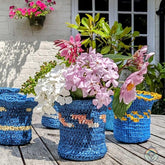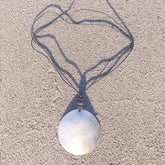Autumn Foraging
Many of us have fond memories of blackberry picking in late August and September. Coming home stained with berry juice sporting purple tongues, there were never quite enough blackberries to make crumble and we all got gripey tummies from gorging ourselves all afternoon.
But I don't recall foraging for anything other than blackberries. Indeed I do remember being firmly told never to pick any other berry for fear of poisoning. This fear, successfully instilled, has remained until I learnt more about the rich diversity of plants & berries that can be safely foraged in the British countryside.
Let's take a look at the traditional blackberry first....
Blackberry (Rubus fruticosus)
Picking blackberries, the fruit of bramble, is a pastime that is embedded in our history and folklore and goes back thousands of years.
Where to find them? Blackberries grow on unmistakable, prickly shrubs that you can find in woods, hedges, heathland and wasteland almost everywhere. Pick the berries when they’re a deep purple-black.
How to use them? Blackberries have a high vitamin C content and can be used to make pies, crumbles, wines, jams, jellies and even vinegar!
How about Elderberry (Sambucus Nigra)..
Elderberries are an easy to recognise late summer fruit. The name elder comes from the Anglo Saxon word 'aeld' meaning fire. This refers to the hollow young stems that were once used for blowing air into a fire.
Where to find them? Elder trees are widespread and easily found in woodland and hedgerows. The small, dark red-black berries hang in compact clusters and are usually ready to harvest in August and September.

How to use them? These berries are packed with vitamins and can be used to make a refreshing cordial or fruity wine. They can also be added to pies, crumbles or hedgerow jam.
More recently I have become interested in Rowan berries (Sorbus aucuparia)
The Rowan tree is also known as mountain ash or in old Celtic 'fid na ndruad' which means wizards' tree, reflecting its long association with magic. Rowans were once planted to protect farm cottages from unwanted attention and can still be seen around many farmyards.
Where to find them? Look for their distinctive pinnate, ash-like leaves. Dense clusters of flowers appear in early summer followed by clusters of bright red to orange berries in late summer. Collect as a cluster from the tree.

How to use them? Be aware that rowan berries are bitter and inedible when raw but can be cooked to make delicious, slightly bitter jams and jellies, or can be preserved in syrup. In the UK rowan berry jelly and preserved fruit are traditionally eaten with gamey meats. To concentrate their sweetness they can be pickled, dried or frozen and then cooked. In Europe, the berries are used to make rowan schnapps.
Aside from berries in late summer we also have the Crab apple (Malus sylvestris). This small apple is one of the ancestors of the cultivated apple. There are two theories on why crab apples are called crab apples. The first is that it’s derived from the Scottish 'scrabbe' (a name possibly originating from the Norse word skrabba). The second is that it derives from the word crabbed, referring to its inferior, sour taste.
Where to find them? They found throughout the British isles and their apples are ready from late summer into autumn (August to October). Crab apple turn either red or a yellowish-green or orange when they are ripe.

How to use them? Crab apples make a gorgeous sunset-coloured jelly that literally glows. It’s delicious on bread or as an accompaniment to meat, particularly chicken. Crab apples can also be added to other jams and jellies as their high pectin content helps to make a good set.
So, are you set to do a little foraging this Autumn? Happy foraging folks!
Please note these three pointers from our biodiversity advisor,Jason Adams, to help you make sure that you forage sustainably and safely:
1. Stick to the paths & take no more than you plan to consume, leaving plenty behind.
2. Stay safe by only collecting what you are absolutely sure you can identify.
3. Note that all wild plants are protected under the Wildlife and Countryside Act (1981).
It is illegal to dig up or remove a plant (including algae, lichens and fungi) from the land on which it is growing without permission from the landowner or occupier. Some species are specially protected against picking, uprooting, damage and sale. A list of these can be found on Schedule 8 of the Wildlife and Countryside Act (1981).












Leave a comment
All blog comments are checked prior to publishing